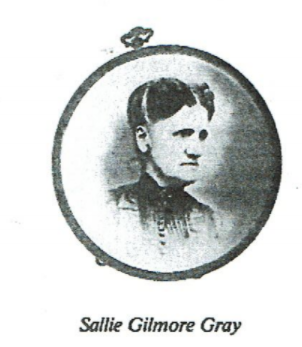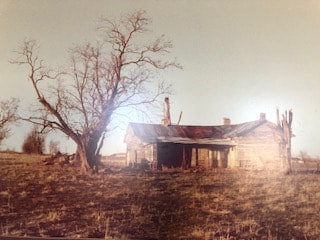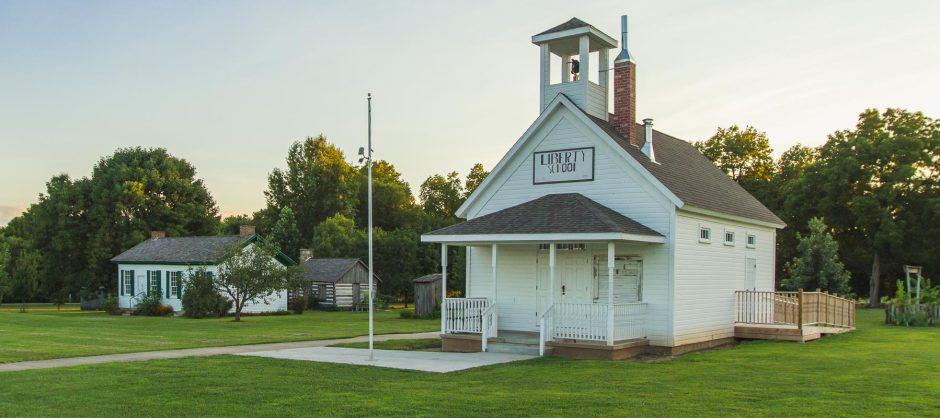Elijah (1799-1882) and Anna Brooks (1804-1878) Gray
Elijah and Anna Gray were originally from Virginia. They were both educated in the early schools of Virginia and married in 1823. They moved from Virginia to Tennessee and later to Springfield, MO. It is thought that Elijah was encouraged by his friend, John Polk Campbell, to move his family to this region. With two older brothers, Elijah was unlikely to inherit any of the family farms, so moving to Missouri, where land was cheap and settled by other Tennesseans, seemed like a good idea. So, after visiting the area in 1840, Elijah sold his stakes in Tennessee, packed up his family and 10 slaves, and made the quest to Greene County. He purchased 400 acres, built a home, and began farming. As a farmer, he was awarded the prize for one of the three best exhibitors of corn during the 1860 Southwest Missouri District Fair. His land was divided into two tracts, one of 240 acres and one of 160 acres, in Wilson Township. While many houses of this time were log cabins, the Grays built a fine home of hewn logs, covered with a shingled roof and topped with a stone chimney. The couple had four children, including one son, James Price, and three daughters- Louisa (married Lee Yarbrough 1843), Mary (Polly) Ann (married John Weaver), and Susan Elizabeth. Susan was two years old when they moved to Missouri. She was educated in Springfield and later married John Polk Campbell in 1857. The 1850 census records show 14 people living on the farmstead. With the older daughters married, the residents were Elijah, Annie, James, and Susan living in the home. Records show there were 10 slaves living on the property, only identified by age and sex. There were three males, 18, 26, and 33 years of age, and three women, all aged 25, and four small children.
Not only was Elijah noted as a leader in farming, but also in business. He was elected as a director of the Springfield Bank. Elijah was also very active in local, state, and national politics. Leading up to the Civil War, many Missourians were at odds when it came to the extension of slavery. In the 1850s, Elijah, a slave owner himself, was associated with the Missouri Bentonites (in favor of Thomas Hart Benton) of the Democratic Party. It is not known how Elijah’s views and support of candidates opposing the extension of slavery may have influenced the treatment or emancipation of Elijah’s slaves. In 1861, a group of Unionist men met to discuss the position of Greene County. While it is not known for sure if Elijah attended the meeting, it was attended by many of his associates.
Annie Gray died in 1878. Elijah died in 1882 from a broken hip as a result of a horseback riding incident. He and Annie were buried in the Yarbrough Cemetery near their farmstead.
James Price (1832-1887) and Sarah “Sallie” J Gilmore (1841-1920) Gray
Son of Elijah Gray and Annie Brooks Gray, James Price Gray moved to Springfield, MO, in 1840. James was one of four siblings, including Mary Ann (Polly) (married John R. Weaver), Louisa (married Lee Yarbrough, 1843), and Susan Elizabeth. His sister, Susan, married John Polk Campbell, who was the nephew of the founder of Springfield.
In 1841, the family purchased the 400-acre farmstead, which was divided into two tracts. The larger 240-acre tract would be his parents’ farmstead. The second tract of 160 acres was where, in 1856, James built the home now standing on the Gray/Campbell Farmstead. His new home would have a similar architecture to his family home, just down the road.

He also married Mary Blakey in 1856, but she died the following year, possibly during childbirth. Her death left James a widower with a sickly infant son, who died within the year. In 1859, he remarried Sarah “Sallie” Gilmore. They had six children, including Susie (born a few months and within miles of the Battle at Wilson’s Creek, 1861), Anna (born near the time and place of the Battle of Springfield, 1863), Lucy, Maggi, Fanny, and Charles. Raising a family amid the Civil War was very difficult. There is no record of James having any military service during the Civil War. Even though he grew up with many Confederate sympathizers, including his wife’s family, it is likely he shared the same sentiments as his father.

In 1861, James entered a business deal with Jabez Owen. While the nature of the endeavor is not documented, it is recorded that the two men incurred a large debt. Unable to repay the debt, the house and property were put on the auction block. The home was purchased by John R. Weaver (James’s brother-in-law).
After losing his home at auction, James Gray moved to Montgomery County, Missouri, in 1864. Sometime the next year, James and Sallie moved in with his parents and remained there for the next 18 years. In 1883, James became ill and moved his family into town. He died in 1887 from cancer. Sallie and her daughters operated boarding houses for the next several years. Sallie died in 1920.




